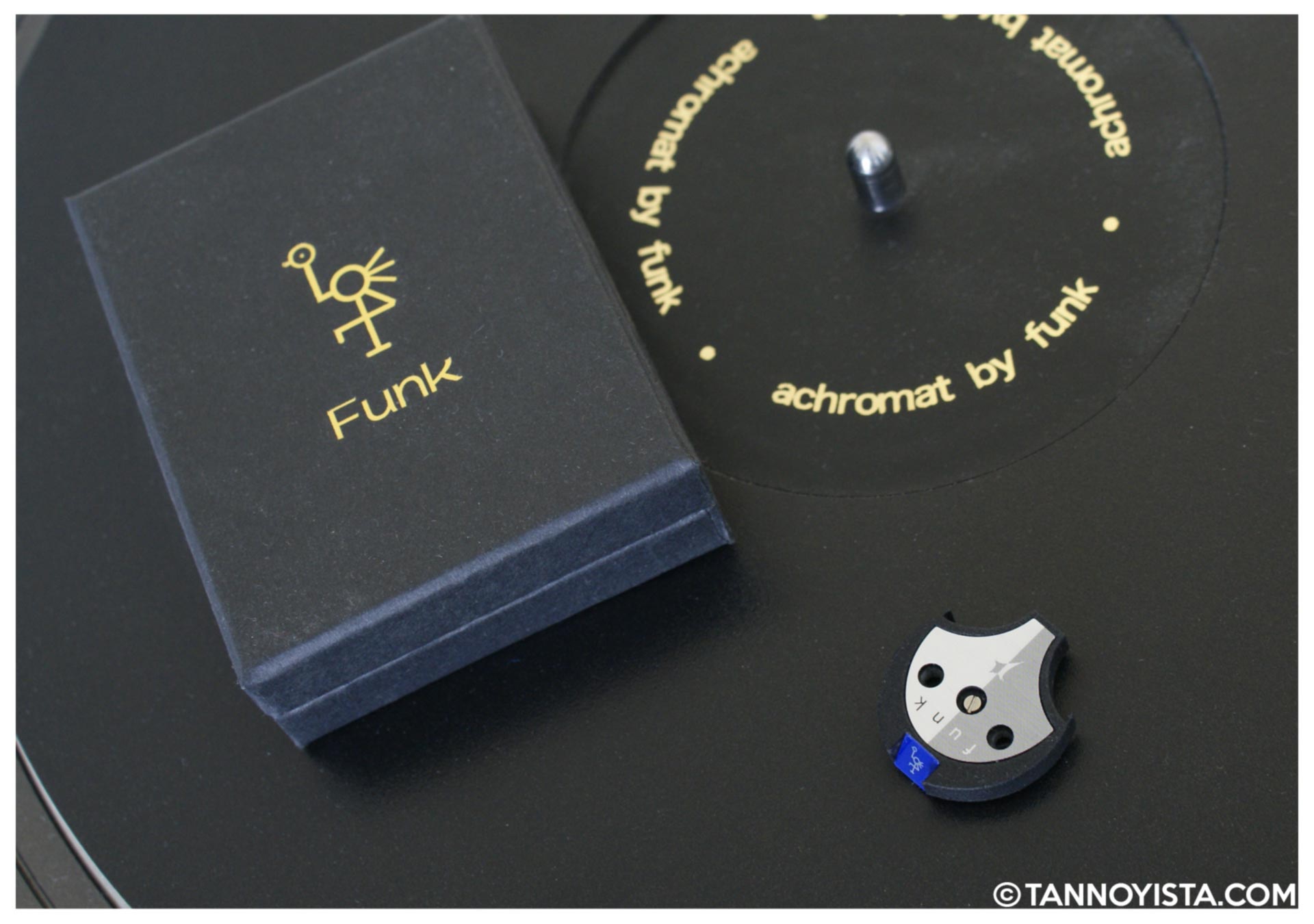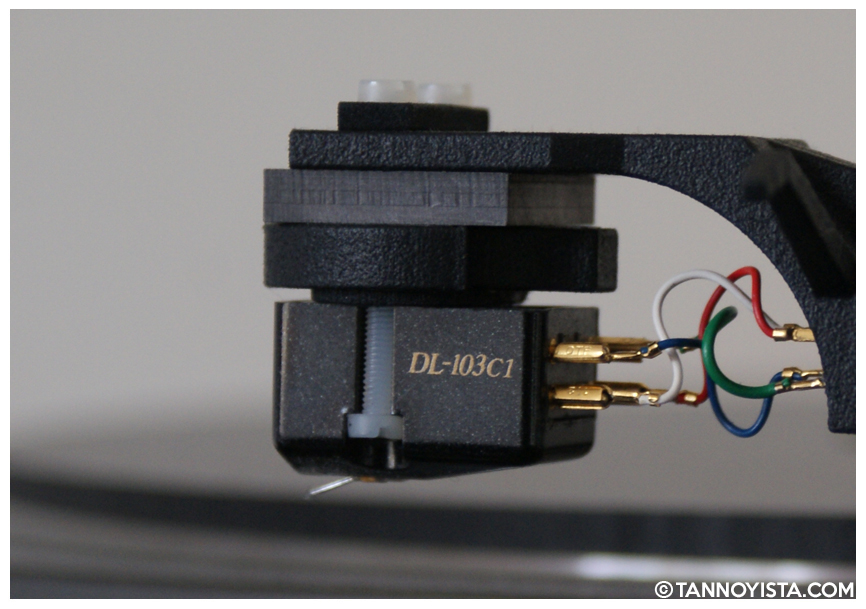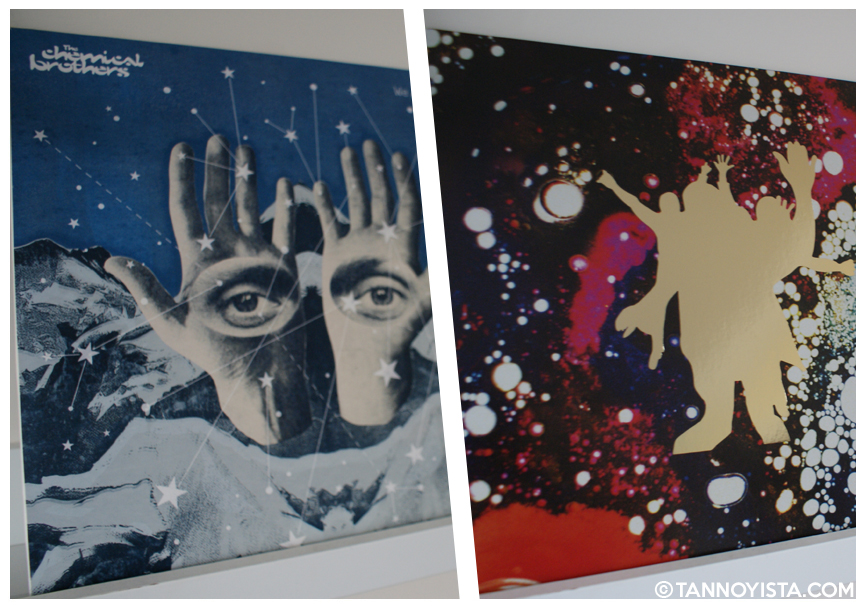Discover the Funk Firm Houdini and Achromat — Transform your turntable’s performance
If you're serious about vinyl, this might be one of the most important upgrades you’ll ever make. Whether you own a £50,000 deck or a sub-£1000 setup, the Funk Houdini and Funk Achromat deserve a place on your shortlist.
If you don't know already, the 'Art of Sound' forum is a wonderful place to find those special manufacturers who design and manufacture wonderful pieces of kit that can truly transform any system. One of those manufacturers is The Funk Firm.
Many would have heard of Funk before. They design and manufacture turntables like the affordable Gett! to the lovely Super Deck Grande. In addition, a selection of Tonearms to fit many budgets, such as the FX1200 to the beautiful FX3D.
They also manufacture turntable accessories and upgrades for REGA and the Technics SL1200 and 1200G/GR.
The System
In my experience, listening to vinyl is a very personal thing. It's a mix of emotions, memories and feelings. We all enjoy the experience of using a deck which appeals to us on a visual level. And if that visual matches our expectations in sound then that's even better.
For me, the Trio L-07D has everything I want out of a deck. It has a heritage, it has its looks and most importantly, it has a reference sound which is rich, ultra-dynamic and as solid as rock and I wouldn't dream of changing anything on the L-07D which tampered with its original groundbreaking design. Like using a graphic equaliser, as soon as you do that, you don't know where you are.
The only thing I would treat myself and my deck with is to a great cartridge, headshell and a platter mat.
After settling on using a Denon DL-103C1 cartridge, I decided to get a decent headshell to go with it. And after coming from an SPU GT on my previous deck (Thorens TD124 MKII), I had used a standard Technics headshell, a Denon PCL6 and various others.
The phono stage I'm using for this review is the Croft Epoch Elite which is highly modified. You can read all about it here:
Finally, after a recommendation from a friend on The Art of Sound, the Audio Technica MG-10 coupled with an Audiosilente graphite isolator and hardware I found my DL103C1 really started to sing. I was blown away.
Then, later in the year, the same friend then recommended two further items to which I was curious about. The Funk Firm 'Houdini' and the 'Achromat' platter mat.
We start with focussing on the latest offering of the pair, the ‘Houdini' and for something so small, it makes a huge difference.
The Houdini
To get the low down on the Houdini, Tannoyista has gotten together with Arthur Khoubesserlan, the MD of The Funk Firm, to ask him some questions about the Houdini and Achromat.
Our first question to him was. How long has Houdini been in R&D?
Arthur: The Houdini was developed 18 years ago, it then sat in the drawer until it was shown in Munich 2017. That early iteration was very complicated and would have been too expensive to build.
Fast forward to 2020, the Houdini has caused somewhat of a culture shock with people expecting it to be foam or solid plastic and so on. No one thought a realistic engineered solution was possible...but now, when they hear it, they are totally speechless.
Q: What were the main challenges?
Arthur: My upbringing included being taught by my maths master who happened to be a true audio professional. He did his own recordings and had his own record label. Therefore I got to experience the real magic of what a professionally recorded sound was all about. Certainly, as records were the music medium of choice, why did they sound so poor when compared to the master tape they came from?
From that point, I got the bug...and I was hooked.
Eventually, it boiled down to one question: How to re-create the record cutter in reverse...after all that's what we’re trying to achieve. If we could reverse engineer the laying-down process, we'd have a more faithful reproduction.
Q: Could you give us some interesting facts about the Houdini?
Arthur: The cartridge needs to be de-coupled: Houdini is a fully suspended design, whilst at the same time being kept stable...you can’t have it wiggling around all over the place.
This is not the paradoxical situation as it appears. The trick to getting it right took me two years to figure out. Stability is generated through a “virtual anchor”, while the “record cutter in reverse” part is achieved via a “torsion-tether”, both of which are the subject of my patent.
Clear as mud? Well, with compacting a suspension into such a tiny vertical space – it does not like being assembled to function as WE want it to. It likes to do its own thing and then, of course, there is the question of keeping the mass down. Original prototypes were made of metal, but the mass shot up.
Using the screws as supplied and its current construction, the Houdini adds only +1g. There are other small, but ultimately important details inside the Houdini that when combined create something very special.
And, to top it off, the Houdini offers compatibility with many different cartridge designs and this is one of it's main claims to fame.
Below is the Houdini fitted and aligned.
NOTE: The spacer shown between the Houdini and the headshell in the picture below is a graphite spacer. It was added to simply level the arm a little, it's not required and does not impact on the performance.
The Houdini in detail
The Houdini is a very clever little gem of a thing and it comes in two types. Both types share the same outer body shell which acts as the main anchor to either the headshell or the cartridge depending on your configuration. Inside the shell is where the separate decoupled base sits.
On one type, both anchor and decoupled sections are threaded, whilst the other type the decoupled base uses a slot-in fixing.
The Houdini is 6mm in-depth, so your deck must allow for this. In my case, a higher set headshell was needed so the VTA could be set with the Achromat in place.
Inside the very nice presented Houdini box is a small screwdriver, a Jig, and a selection of nylon screws. There is also a folded instruction leaflet showing how to install it for a number of configurations.
Fitting the Houdini.
The fitting of the Houdini is really quite easy. Regardless of which configuration you require in conjunction with your headshell and/or cartridge, the only thing to remember is that the Houdini should always be fitted to your cartridge first, then the headshell. The instructions give you plenty of options for fitment to different types of cartridges and headshells.
In my case, the DL-103C1 affixes with the nylon screws threading upwards into the threaded decoupled base type Houdini. Then, another set of nylon bolts are used, threading downwards, though the slots in the top of the headshell into the Houdini's outer body shell.
The supplied screws will need to be adjusted and carefully cut in length in most applications. This is easily done but you must use the supplied Jig. The Jig is a 2mm deep piece of plastic with two holes. To get the correct length, simply thread the screws through the cartridge and then the Jig. If any of the thread protrudes through the Jig, simply snip it off with some nail clippers.
The point in getting the correct thread length is so that no contact is made inside the Houdini when the screws threaded from either the top or the bottom. Remember, the decoupled base has to be exactly that... decoupled.
Once fitted, it's just a case of alignment. To make this as easy as possible, I would recommend the thinnest types of headshell wires. Thicker/stiffer wires can influence the alignment of the decoupled section of the Houdini.
The Trio/Kenwood L-07D and Houdini
We all have been conditioned with the ye olde theory of 'thy cartridge should become one with thy arm', right? Well, as Arthur explained, the Houdini shakes things up a bit on that front with well-founded reasoning. It decouples the cartridge from the arm, keeping both cartridge and arm independent whilst keeping the tracking of the stylus just as precise.
I originally thought I didn't really need a decoupler because my experience with the L-07D is that it's dead quiet. After all, it was designed in the days when things were made to last and with a high-end budget only manufacturers these days would dream about. But the Houdini added something I couldn't deny, and the word 'addictive' is a good place to start.
My full review of the Trio/Kenwood L-07D can be found here:
Let's start with the Houdini without the Achromat.
Once the Houdini was aligned and fitted to the L-07D. My first needle drop was on one of my reference albums. Cavern of Anti-Matter - Blood Drums. I chose this to be my first drop simply because I've played it so many times. It has a wonderful sound stage and to also hear what the airiness and bass were like with the Houdini in place.
The Houdini's performance from the very first beat shocked me into an enjoyable perplexity. It's not every day you fit something which makes such a profound difference in the feel of the music. Like the sound from my Studer A80, I witnessed the same feel and clarity. And, again, like listening to the A80, I found myself reading more into the rhythm and the emotion than I had done before. I found more strange nuances of detail which synced into the beat which, for me, makes the experience that little bit more exhilarating.
My full review of the Studer A80/R can be found The Studer A80/R Master Tape Recorder
At that stage, I realised that I'd stopped analysing and sank into the beat. The Houdini seems to allow tracking to become more fluid. It seems to allow a wider stream of information yet in a subtle way it brings the boogie out where it counts.
My second LP was the 2020 deluxe repress of Shpongle's, Ineffable Mysteries from Shpongleland - An amazing pressing from the Goa-Trance masters. Again, the first needle drop treated me to a more luxurious, more voluptuous experience and it carried on through each side of the album.
With the soundscape widened, it attracted more feeling and realism.
Adding the Achromat into the mix.
Back in 1979, Arthur patented and released his first acrylic platter mat but being naive in business at that point, others ripped it off. When he started Funk, he had a new, improved design, the Achromat. Theoretically, it has a complex internal structure which dissipates the energy that other acrylic mats cannot do.
Since then it's sold extremely well and I've always heard great things about it. For some reason or another, until this point, I've never tried the Achromat before, so I'm a funk virgin you might say.
The Achromat I'm using in this review is the 5mm black version and is very light in weight. Other colours are also available as well as a 3mm version too.
So without any further ado, I plopped the Achromat on to the platter and raised the VTA to accommodate. The L-07D has the most impressive tonearm and it allows you to adjust the VTA on the fly, so for me, this was a doddle.
Starting with 'Cavern of Anti-Matter' and Shpongle again, it was a real pleasure to feel that bass again. The sounds flowed with a slightly increased edge of speed and energy. The soundstage also had a very slight increase in its depth and the focus had a slightly more nuanced accuracy.
Moving on to some other albums like Cavern of Anti-Matter's 'In Fabric'. A trippy soundtrack to a trippy, far-out film. The same effect was experienced.
GOLDFRAPP - SEVENTH TREE
KOSHEEN - RESIST
PINK FLOYD - MEDDLE
ROXY MUSIC - FOR YOUR PLEASURE
R.E.M - LIFES RICH PAGEANT
As an experiment, I removed the Achromat and reset the VTA. The result was certainly noticeable. With the Achromat fitted the sound stage became slightly deeper with an added edge of energy. The result was subtle but the quality of that added subtleness was apparent. It added a very nice synergy and grip with the Houdini.
To conclude
By itself, the Houdini has to be one of the most interesting and important additions I've added to any turntable. It really is something else. It isn't an illusionist, it's a revealist and a revivalist. That is, you will find yourself revisiting your collection more than ever and enjoying it more than ever.
Working together, the Houdini and Achromat 'ground' the music with an illuminated and phantom-like quality. They bring to the reproduction a dynamic and a more organic nature keeping it true and real. The sound jumps out at you, bringing fine subtleties, detail and emotion.
The Art of Sound Forum
The Funk Firm - Prices and information:
The Houdini retails for £300
The 5mm Achromat retails for around £75.
The Funk Firm website:
Contact The Funk Firm:
T: 44 (0)7846 798367
The Funk Firm
Unit 4B, Vinalls Business Centre
Nep Town Road
















 All the photographs and images on this site are copyright.
All the photographs and images on this site are copyright.
0 comments